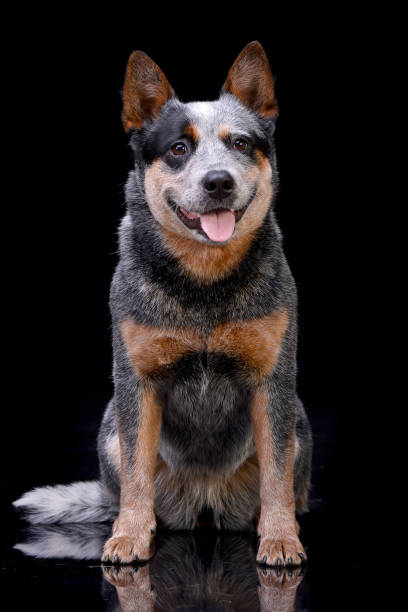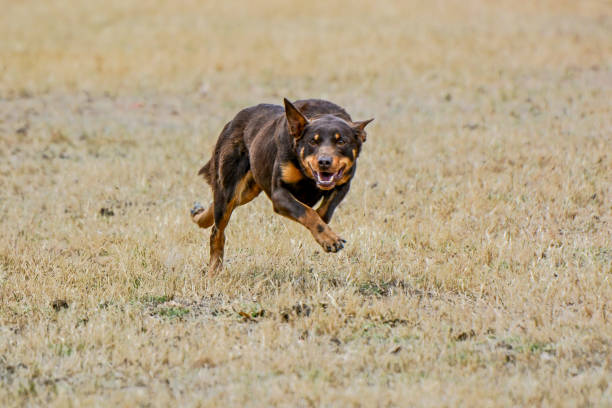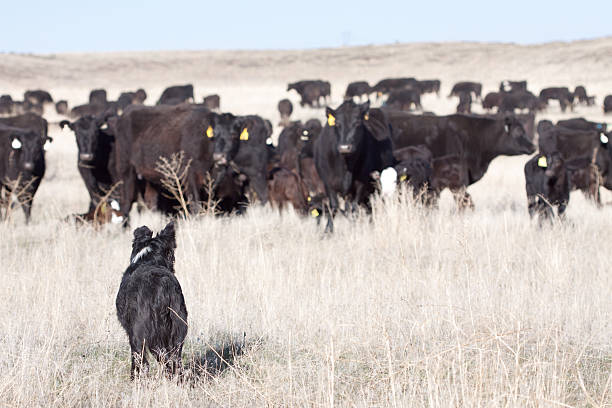Breeds of cattle dogs:
Cattle dogs are a unique category of herding dogs bred specifically for the demanding task of managing and driving cattle. Known for their intelligence, agility, and stamina, these dogs are indispensable to farmers and ranchers worldwide. This article explores various cattle dog breeds, their training methods, and their primary regions of use.
1. Breeds of Cattle Dogs
Australian Cattle Dog (Blue Heeler/Queensland Heeler):

The Australian Cattle Dog, often referred to as the Blue Heeler or Queensland Heeler, is renowned for its blue or red speckled coat. Originating in Australia, this breed was developed in the 19th century to handle the harsh conditions and vast distances of Australian cattle stations. They are known for their endurance, intelligence, and loyalty, making them exceptional working dogs.
Border Collie:

While primarily associated with sheep herding, the Border Collie is also a formidable cattle herder. Originating from the border regions of Scotland and England, Border Collies are celebrated for their unparalleled intelligence and work ethic. Their ability to understand and follow complex commands makes them versatile herding dogs.
Australian Kelpie:

The Australian Kelpie, another breed from Australia, is famed for its versatility and agility. Developed to work in challenging environments, Kelpies are known for their stamina and ability to cover large areas efficiently. They possess a strong work drive and are often seen working in both cattle and sheep herding.
Australian Shepherd:

Despite its name, the Australian Shepherd was developed in the United States. This breed is known for its intelligence, trainability, and strong herding instincts. Australian Shepherds are popular in various herding roles, including cattle, due to their adaptability and keen sense of direction.
Welsh Corgi:

The Pembroke Welsh Corgi and Cardigan Welsh Corgi, although short in stature, are effective cattle herders. Their low build helps them avoid kicks from cattle, and their agility allows them to nip at the heels of livestock to drive them forward. Corgis are a testament to the fact that size does not determine a herding dog’s effectiveness.
2. Training Cattle Dogs
Training cattle dogs requires patience, consistency, and a deep understanding of canine behavior. The process often begins when the dogs are still puppies, as early socialization and exposure to livestock are crucial.
Basic Obedience Training:
Before specializing in herding, cattle dogs must master basic obedience commands such as sit, stay, come, and heel. These commands establish a foundation of control and communication between the handler and the dog.
Introduction to Livestock:
Gradual exposure to cattle is essential. Initially, puppies may be introduced to smaller, less intimidating livestock such as sheep or goats. This helps build their confidence and herding instincts in a controlled environment.
Developing Herding Commands:
Specific herding commands are taught, including directions (left, right), movements (walk on, get back), and stopping commands (stand, lie down). Handlers use a combination of verbal cues, whistles, and body language to communicate with the dogs.
Controlled Training Sessions:
Training sessions are conducted in controlled environments, such as small paddocks or training pens. This allows the handler to closely monitor the dog’s behavior and correct any mistakes immediately. Positive reinforcement, such as treats and praise, is used to encourage desired behaviors.
Building Endurance and Stamina:
As cattle dogs must cover large distances, building their physical endurance and stamina is crucial. Regular exercise, combined with progressively longer herding sessions, ensures the dogs are physically prepared for the demands of cattle herding.
3. Where Cattle Dogs Are Used Most
Cattle dogs are indispensable in various regions worldwide, with their primary use in countries with significant livestock farming industries.
Australia:
Given the origins of several cattle dog breeds, Australia is a prominent user of cattle dogs. The vast cattle stations in Queensland, New South Wales, and Western Australia rely heavily on Australian Cattle Dogs and Kelpies to manage their livestock. These dogs are essential in covering large, rugged terrains where mechanical means may be impractical.
United States:
In the United States, cattle dogs are widely used in states with large cattle ranching industries, such as Texas, Oklahoma, and Montana. Australian Shepherds and Border Collies are popular choices among American ranchers. The dogs’ ability to handle large herds and diverse terrains makes them valuable assets on American ranches.
United Kingdom:
While the UK is more commonly associated with sheep herding, cattle dogs like Border Collies are also used for cattle management. In regions such as Wales and Scotland, where mixed farming is prevalent, these dogs play a crucial role in livestock management.
Canada:
In Canada, cattle dogs are used primarily in the western provinces of Alberta and Saskatchewan, where cattle ranching is a significant industry. The harsh Canadian climate and vast open spaces make breeds like the Australian Cattle Dog and Border Collie ideal for cattle herding.
South America:
Countries like Argentina and Brazil, with their extensive cattle ranches, also employ cattle dogs. The breeds used are often similar to those in the United States and Australia, as the working conditions and herding requirements are comparable.
